Mazda6 adds style, Skyactiv for 2014
By John Gilbert
The Mazda 626 has always been a worthy midsize entry, just as dependable, and sportier, though less-heralded, than midsize segment leaders Honda Accord, Nissan Altima and Toyota Camry. When it was renovated into the Mazda6, it moved higher on the artistic list and had an edge in sporty handling, but still didn’t match the hot-selling numbers of its competitors. Its last restyling,took the Mazda6 to a much more flowing look, although like the Accord it became large enough to be too large for some midsize buyers.
For 2014, Mazda has introduced another all-new Mazda6, and it appears to connect on all (four) cylinders. It has outdone all previous models in styling and technology, with styling that has a strong resemblance to recent auto show Mazda concept vehicles, and performance from its Skyactiv powertrain technology.
The styling, Mazda officials say, captures the muscular energy of a lion or cheetah as it tenses up to pounce, a compelling idea that inspired the Kodo concept car. The tight lines are attractive, none moreso than the contour that arches above the front wheel openings before blending into the flanks.
Its engineering starts with Skyactiv, which has made Mazda the first Japanese manufacturer to discard its well-engineered array of engines in favor of entirely revised engine technology, focused on the future while easily topping current demands.
A recent test-drive of the 2014 model in the later stages of Minnesota winter indicates that the front-wheel-drive Mazda6 has made direct hits on its multiple targets of style, comfort, versatility, performance and technology. Amazingly, if the test vehicle I drove had listed at $30,000, I would have thought it was worth it; instead, it listed for just over $20,000 — a remarkable bargain.
As for sales volume, Mazda is a quick welterweight boxing against a ring-full of heavyweights. Toyota, Honda and Nissan are focused on massive sales, while Mazda seems content to be a niche player, focusing on changing directions more efficiently to be stay after its image of technology, performance, and the now-familiar “zoom-zoom” philosophy of building cars that are fun to drive. Read more
BMW X1 has style, size, power; needs X-Drive, tires
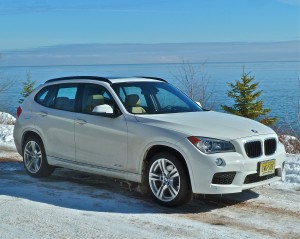
BMW X1 with 2.0-liter turbo four, was quick and agile with rear-drive and Pirelli Cinturatos on dry pavement.
By John Gilbert
When I first had the chance to drive the new BMW X1, I was impressed with the looks and performance, and the diminutive size of the new smaller brother of the X5 and X3 SUVs from BMW’s ever-expanding stable.
It is more compact than most crossover SUVs, but most people don’t need the enormous size of the heftiest vehicles that brought the U.S. auto industry to near the point of capitulation. In many ways, for those who need room for only four occupants and light storage, the smaller the better, because that means better performance and far better fuel economy are attainable. The X1 fit that bill perfectly.
My first drive was last fall at the Midwest Auto Media Association fall rally, and I only drove it briefly. Impressed though I was, I was surprised to learn that the vehicle was only 2-wheel drive, with the rear wheels being the ones that drove the X1 with its front-mounted, 2.0-liter turbocharged 4-cylinder engine supplying plenty of punch for all-wheel drive. Driving as I do predominately in Minnesota, which has long and snowy winters as well as gorgeous summers, having a pickup or utility vehicle with rear-wheel drive should be grounds for incarceration.
I was assured the X1 does come with X-drive, BMW’s slick all-wheel-drive system. That made me eager to get one for a week-long test drive over the winter months.
Traditions generally cross past, present and future boundaries, and every March in Minnesota, a couple of those traditions run smack into each other. One of those is that when it comes time for the state high school hockey or basketball tournaments, a late-season blizzard is the norm. This year, Mother Nature celebrated both of those tournaments — and many of the days in between — with the snowiest March ever. Those heavy snowfalls, of course, afforded extra winter test-driving time.
In automotives, one tradition from the past is that conventional front-engine/rear-drive affords the most exciting and satisfying high-performance “feel” for sporty vehicles. In Minnesota, of course, it snows every once in a while, and when it snows on top of ice, treacherous road conditions can lead to all sorts of slippery, terrifying driving, and nose-heavy front-engines with light-in-the-rear, rear-wheel-drive adds more than just excitement to the mix. When front-wheel-drive vehicles took over, white-knuckle driving in icy conditions ended in Minnesota and other snow-belt states, and all-wheel-drive has taken that sense of security to another dimension.
Even with front or all wheels driving the vehicle, tires are still extremely important to any driver’s peace-of-mind in wintry driving. Most major brands make special all-season or winter tires, with the most popular being the Bridgestone Blizzaks, a softer-compound tire that grips ice, churns through fresh snow, and keeps improving its ability to work well enough on dry pavement without wearing quickly. My favorite winter tires are the Nokian WR or WR-G2, because they have uncompromising tread compound that maintains its flexibility no matter how cold, while high-performance tires tend to harden and have less traction when it’s cold.
Some manufacturers equip their press-fleet vehicles with good all-season tires during winter. Others don’t seem to be aware that there’s a difference. BMW is one of the few companies that stubbornly refuses to change from the all-out handling performance tires it sends on its vehicles, regardless of region. BMW also is one of those German companies that stubbornly held firm on rear-drive vehicles until recently. Now it sells its splendid 3-Series, 5-Series, and even 7-Series sedans with X-drive, and of course its various SUVs also have X-drive. Read more
C-Max style, room, economy defy convention
Rarely has a new vehicle been introduced with more confusion and criticism than celebration.
Hmmm…confusion, criticism, and celebration. Maybe that’s how they came up with the name “C-Max.” Every automaker likes to boast about uniqueness, and how their new product defies categorization, but Ford seems to have mastered the trick with the new C-Max.
It seems to be neither fish nor fowl, car or truck, small minivan or spacious mini car. It comes as a hybrid, or a plug-in hybrid, known as Energi. And it has remarkable interior space for being so compact and small on the outside.
Amid a flurry of quirky or trendy names that feature letters, numbers, or retrospective monickers, Ford has confused U.S. consumers and critics with the new C-Max. When it was first announced, many thought it was a large semi-trailer-hauling truck, and even though it has been available in Europe with conventional engines, when the car magazines and North American Car and Truck of the Year executives made their choices on categorizing, it wound up listed among trucks, and even minivans.
In reality, the C-Max is a cleverly designed and executed small capsule of a car, shaped indeed like a minivan or tiny crossover SUV. It finished third among North American Truck/Utility of the Year candidates, behind the Ram 1500 and the Mazda CX-5, and Motor Trend listed it in its truck preview issue right there with the Tahoes and Rams and Ford cousins like the F150 and Explorers. Ford itself continually draws comparisons to various Toyota Prius models.
Introduced right before the end of the 2012 calendar year, the C-Max appeared to be a blunt instrument in the vast array of small economy vehicles. Rounded off, its capsule shape bears a strong resemblance to the new Escape SUV, or the Focus or Fiesta compact and subcompact, aimed at aerodynamic smoothness.
Prices range from $25,000 to over $30,000 for the fully-equipped plug-in Energi model, but the C-Max performance is what will make it a large-volume seller. You quickly forget how small it is outside when you climb in and find the tall roof providing lots of headroom, adequate rear seat room and spacious cargo area inside the rear hatch, with, of course, expansion via fold-down rear seats. And you can forget it’s a hybrid by how swiftly it accelerates or willingly passes other cars when you drive it even a little aggressively. Read more
Audi S4, S5 use quattro to blow by winter
By John Gilbert
Twice this winter, my driveway has been graced by three new cars for appraisal during specific weeks, and on both of those weeks my Great White North region of Minnesota became truly white with traffic-clogging blizzards on the North Shore of Lake Superior. On both of those weeks, Audi models have been the reluctant stars.
First, I had two impressive new sedans, plus an Audi S4 quattro S-tronic sedan. Now, Audi makes a very fine A4 sedan, the company’s bread and butter vehicle that bridges the gap from compact to midsize. It drives well, handles well, and gets good fuel economy. Audi also makes an “S” model of the A4, called the S4, which gets all sorts of high-performance upgrades — engine, transmission, suspension, brakes, interior, exterior, virtually everything.
Why, I thought, did they send me a sporty sedan built for high-performance in the middle of winter? For the first three days of the week, I hopped back and forth between the other two, both new front-wheel-drive sedans. And then we got hit with an 8-inch blizzard. The two front-wheel drivers were OK, but they did spend an inordinate amount of their drive time spinning for traction and chattering the traction-control indicator instead of filling me with confidence that we were going to go straight up that hill.
So I ambled over to the snow-covered S4. Knowing it has quattro, which is a traditional all-wheel drive system that Audi created, improved, and has pretty well perfected by now. Audi, by the way, insists that “quattro” be spelled with a lower-case “q” — which I insert here just so readers of car magazines who see quattro always capitalized will appreciate how arrogance can supersede proper spelling. At any rate, I knew the quattro system would scratch and claw, even though the S4 comes with low-profile, high-performance handling tires. When I looked, however, those neat Audi wheels were shod with Bridgestone Blilzzak low-profile winter tires.
For the rest of the week, I left the two all-new FWD sedans parked and cavorted over, through, uphill and around snowdrifts, plowed piles, and icy streets in the Audi S4 quattro. Blizzaks are among the very best winter tires available, because they grip the ground, even on ice, and enhance your ability to get through the worst storms without any of those white-knuckle moments where you’re not sure you’re going to have traction the next time the tires go around. The original Blizzaks did a great job on ice, but decomposed quickly when you drove on normal wet or dry pavement. It was important to take them off and mount summer tires and save the Blizzaks for the next winter. Read more
Chicago Auto Show provides futuristic review
By John Gilbert
CHICAGO, ILL. — The Chicago Auto Show prides itself on being the biggest of the four major U.S. auto shows, claiming that by the time the 105th show ends its 10-day run on February 17, more people will have filed into McCormick Place than will attend the November show in Los Angeles, January’s Detroit event, or April’s New York show.
The shows each take on their own personalities. In L.A., the emphasis is on downsizing, fuel efficiency, and alternative forms of fuel; in Detroit, it’s time for the domestic Big Three to beat there chests and proclaim that they’re back to prominence, and that it’s safe to once again boast about more power and size. Chicago is more like New York, where visiting the city is part of the allure. You can’t get swallowed up as easily in Chicago, but it is loaded with fine restaurants and blues nightclubs, which makes after-hours gatherings an easy way to fill in the blanks if there is a shortage of new introductions.
This year, a lot of introductions were made at Los Angeles, and the Detroit show was dominated by General Motors, with the Cadillac ATS winning North American Car of the Year, and Chrysler LLC, with the Ram 1500 winning North American Truck of the Year, and the newly unveiled Chevrolet Corvette taking home “Car of the Show” honors from the hometown observers.
Only a few interesting new introductions at Chicago left room for the Upper Midwest attendees to examine the numerous technical advances currently going on in the industry. A highlight of the show was the public introduction of the new Mercedes Style Coupe, a stunning compact sedan that was unveiled to the media in Detroit but looked glorious on its pedestal at the Chicago show.
Some who hadn’t seen it thought it looked like a large sedan, but while it resembles the “four-door coupe” look of the previous CLS Mercedes, this one will compete as a compact, a luxury vehicle that could change the competitive balance. The car was unveiled in a major Super Bowl advertisement, where a customer was willing to make a deal with the devil for such a beautiful car, but backs out when he finds he can buy it for under $30,000 — without selling his soul.
Nissan surprised many by turning its Nismo high-performance arm on not only the 370 Z sports car, but also on a Juke. The Nismo Juke is aimed at bringing down the high cost of high performance, while fitting the subcompact runabout with a 1.6-liter turbocharged 4-cylinder upgraded to 197 horsepower and 184 foot-pounds of torque, churning through all-wheel drive. In previous efforts, Nismo has built no-compromise hot performers, with the engines, transmissions, suspensions, exterior styling and even the seats and interiors given special treatment. For the Nismo gang, the Juke is a departure.
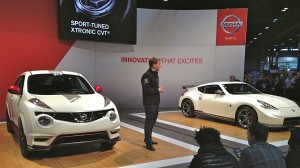
Nissan's high-performance Nismo arm unveiled a new Juke, left, and 370Z with upgraded power, performance and features. -- Photo by Jack Gilbert.
“The Juke is a polarizing vehicle, with a lot of innovations,” said Michael Bunce, chief product planner for Nissan’s large sedans and mid to compact SUVs. “Nobody is sure whether the Juke is a crossover or a car, but it doesn’t matter. We took a lot from the Nismo heritage. For example, the spoiler on the rear of the Juke Nismo really works to create 37 percent more downforce. We will offer some new features, such as a navigation system, with rear-view camera, and a Rockford-Fosgate audio upgrade. We aren’t saying the prices yet, but it will be comparable to the top-of-the-line SL grade.”
Chevrolet introduced a 2.0-liter diesel version of the compact Cruze, which will be a first for a U.S. company, and it announced intentions to go after Volkswagen’s popular Jetta, Golf and Beetle TDI models, which are currently the only compact vehicles with diesel power available.
Not to be outdone, Volkswagen showed off old-looking but new Beetle models, with the significance of a new engine lost on many observers. Ranier Michel, VW chief engineer, said, “The new Beetle GSR will have a 2.0-liter Turbo that is actually a new generation that will replace the 2.0 Turbo we’ve used for so long. It has 10 more horsepower, and it will go into the regular Golf Turbo, GTI and Jetta GLI.
Dodge Trucks, as they were formerly known, are now to be called “Ram” without the Dodge name, in an attempt to isolate the trucks into a separate brand. In Chicago, Ram unveiled its new ProMaster van — a tall, spacious commercial van that looks a lot like Nissan’s rival, and has a similarity to the Sprinter that Dodge used from Mercedes when Chrysler Corporation used to belong to Mercedes. The ProMaster comes from Fiat, the new owner of Chrysler LLC., and it has a chance to be enormously successful, Dodge officials say, because it already is very successful in Europe.
“It’s the top-selling commercial van in Europe,” said Brad Pugh, Ram’s lead engineer. “It outsells the Sprinter and the Ford Transit in Europe. When I got the chance to drive one with our Pentastar engine in it, it felt like a rocketship. All of our other vans have been pickup based, but this one has its own platform, with all four corners having active suspension. It is extremely comfortable, and it handles really well.”
The Pentastar V6 engine is a 3.6-liter dual-overhead-cam gem with variable valve timing. It replaces seven V6 engines that all were forms of stopgap designs to improve on existing engines. In all Chrysler and Dodge sedans, plus the Dodge Caravan, Jeep Grand Cherokee and now Wrangler, the engine has been very impressive, both for performance and fuel economy. Putting it into the full-size Ram 1500 pickup, with the new 8-speed transmission, was the key to SX version of the Forte, which is an eye-catching hatchback model. Hyundai’s Elantra won 2011 North American Car of the Year, then brought out an impressive companion GT 5-door hatchback on a longer wheelbase. Since the Forte rides on the Elantra chassis, the elongated and stylish Forte SX should make a similar 1-2 punch for Kia.
Many of the Asian carmakers showed off concept vehicles, which may predict uipcoming models, particularly those from Honda and Kia.
Mazda was comparatively quiet, having already shown the new Mazda6 sedan and already is shipping them to showrooms with its makeover Skyactiv design, power and transmissions. Mazda spokesman Jeremy Barnes said the new car will use a larger 2.5-liter Skyactiv 4-cylinder, and also will be coming with a 2.2-liter turbo-diesel. The diesel will become the first Japanese sedan powered by a turbo diesel, and it will be available the second half of 2013.
Barnes said the new CX-5 crossover utility is selling very well as the first all-out Skyactiv, and it, too will get thge 2.2 diesel to join the standard 2.0 gas engine. “The new 2.5 has 29 more horsepower than the 2.0,” Barnes said. “But in our test drives, we’re still seeing 32 miles per gallon with the larger engine and all-wheel drive. Like the CX-5, the Mazda6 will get Mazda’s new pair of transmissions; the company built its own 6-speed units both manual and automatic, with the automatic offering the advantages of a CVT, a direct-sequential, and a conventional automatic, but without any of the of the shortcomings each of those have.


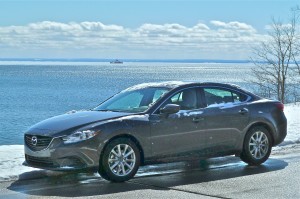
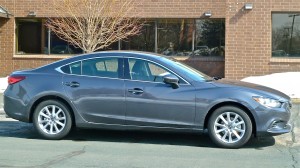

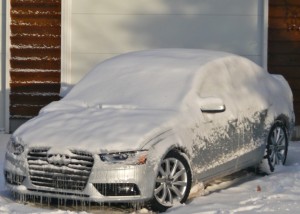
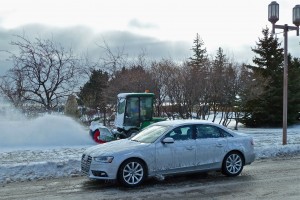
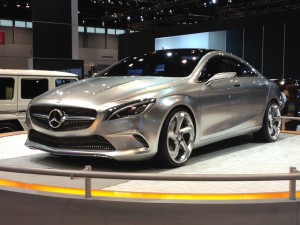
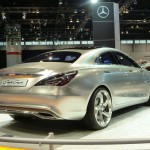
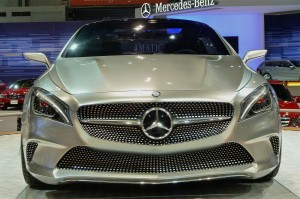

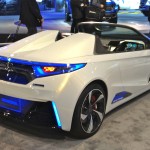
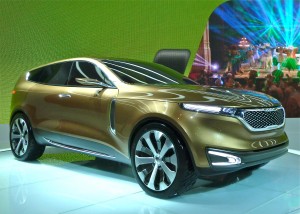
 John Gilbert is a lifetime Minnesotan and career journalist, specializing in cars and sports during and since spending 30 years at the Minneapolis Tribune, now the Star Tribune. More recently, he has continued translating the high-tech world of autos and sharing his passionate insights as a freelance writer/photographer/broadcaster. A member of the prestigious North American Car and Truck of the Year jury since 1993. John can be heard Monday-Friday from 9-11am on 610 KDAL(www.kdal610.com) on the "John Gilbert Show," and writes a column in the Duluth Reader.
John Gilbert is a lifetime Minnesotan and career journalist, specializing in cars and sports during and since spending 30 years at the Minneapolis Tribune, now the Star Tribune. More recently, he has continued translating the high-tech world of autos and sharing his passionate insights as a freelance writer/photographer/broadcaster. A member of the prestigious North American Car and Truck of the Year jury since 1993. John can be heard Monday-Friday from 9-11am on 610 KDAL(www.kdal610.com) on the "John Gilbert Show," and writes a column in the Duluth Reader.